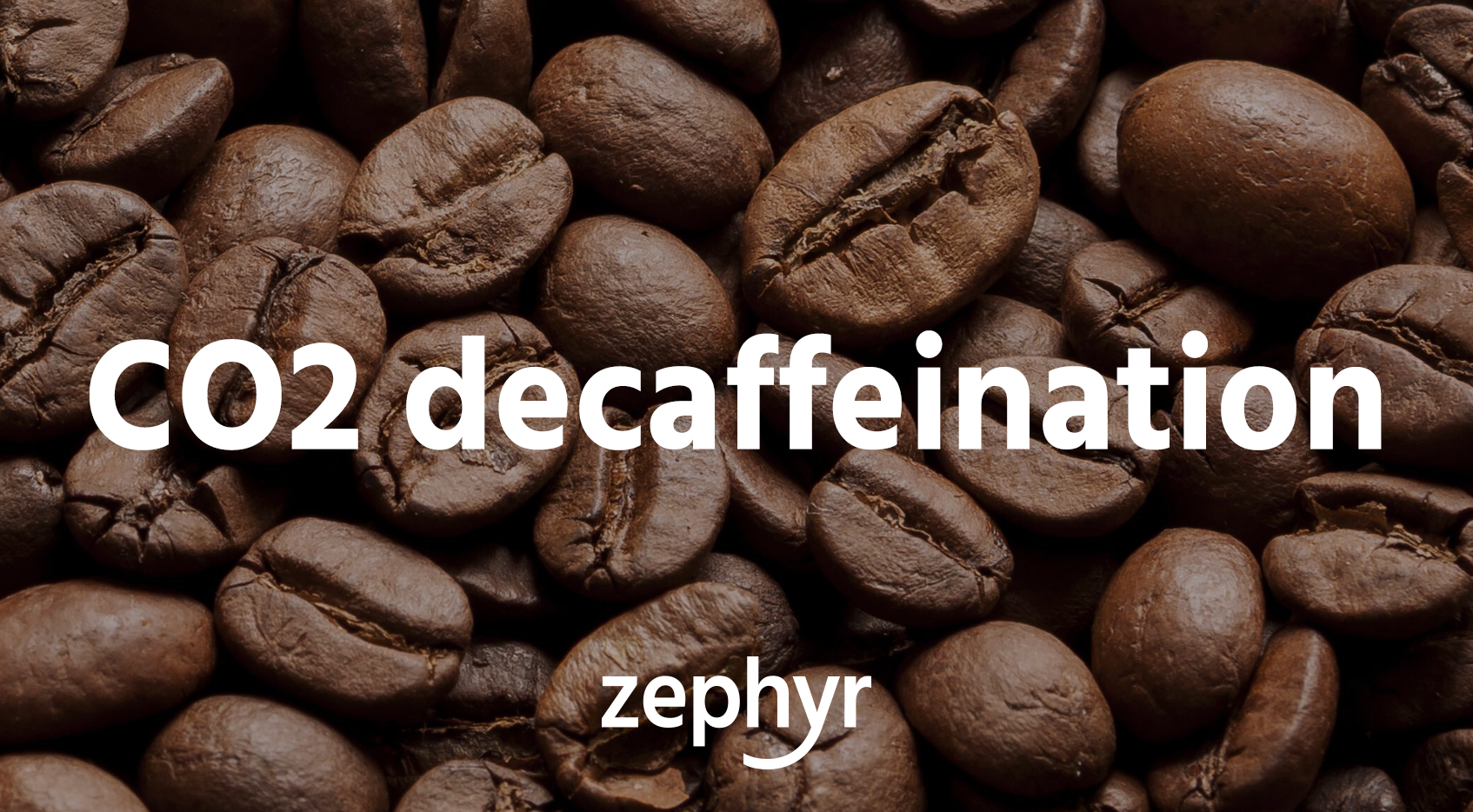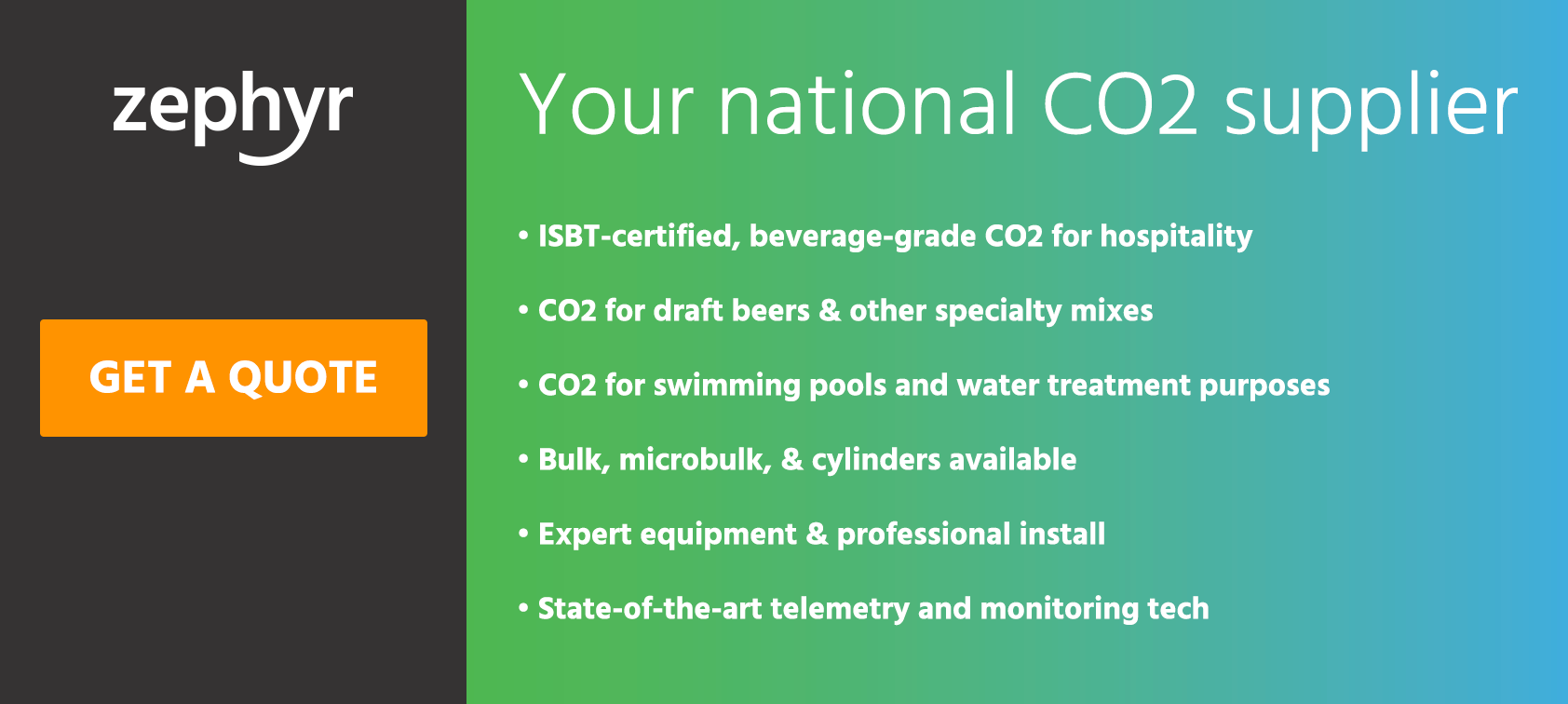The CO2 decaffeination process is one of just two that removes caffeine from coffee without using chemicals. Learn all about the process here.
Decaf coffee sits on all grocery store shelves and a bag or two may be sitting in your kitchen right now. But behind that ease of commercial access is a notoriously difficult process that must occur to get from the plant to your cup.
In the coffee processing, restaurant, or beverage/soda business? Zephyr would be happy to give you a free CO2 quote, here.
4 main coffee bean decaffeination methods
It is incredibly difficult to remove caffeine from coffee beans and to this day, there are only four common methods used to succeed in the process. Two of those four processes use chemical solvents, including methylene chloride or ethyl acetate. Mmmmm!
The other two are “non-solvent” methods. The one that uses nothing but water and lots of time, called the Swiss Water Method, didn’t come to market until 1988. It’s fascinating but time-dependent. You can read about it here if you’re interested.
But it’s the fourth method we’re here to talk about — CO2 decaffeination.
CO2 decaffeination origin
CO2 decaffeination basically uses coffee beans, carbonated water, and pressure. The method was only discovered (by accident) relatively recently, in 1967, by a chemist named Kurt Zosel at the Max Planck Institute.
Zosel was working with CO2 under incredibly high pressure, which is done by chemists to separate individual substances from mixtures, leaving the residual byproducts unchanged.
In 1967, Zosel happened to notice that caffeine, which is a simple alkaline, was one of those substances that dissolved in highly-pressurized carbon dioxide. By 1970, he had himself a patent for his CO2 decaffeination process.
The CO2 decaffeination method
Here is a simple break down of how the CO2 decaffeination of coffee beans works:
1. Coffee beans are soaked in water. (This causes the beans to swell to twice their size and allows the caffeine to ultimately dissolve into the water trapped inside the bean.)
2. The soaked beans go into huge stainless steel extraction vessels, which are then tightly sealed.
3. Liquid CO2 is then pumped into the coffee beans at an incredible rate of pressure — 1,000 pounds per square inch, at a temperature of roughly 200 degrees F. At this rate of pressure, we call this supercritical CO2.
4. The supercritical CO2 acts as a solvent, absorbing the caffeine and some of the water. Each bean needs about 5-7 hours to diffuse all of its caffeine.
5. Once the beans are caffeine-free, they’re removed, dried, and roasted for packaging.
But there’s one more step in this no-waste process. The decaf beans are now off for production, but what about all that extracted caffeine?
It is actually recovered through something called an absorption chamber. By simply showering the dissolved caffeine CO2 with water, the droplets of H2O pull the caffeine out of the CO2 and collect in a separate chamber. This liquid caffeine is then sold to drink manufacturers and other companies that add caffeine to their products.
The leftover CO2 is not wasted either. Now purified by the end of this whole process, it can be recaptured, recirculated, and reused.
Sources: Max Planck Institute


